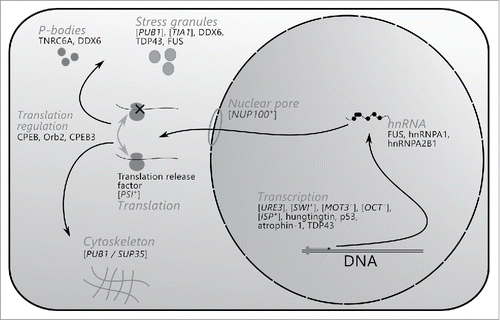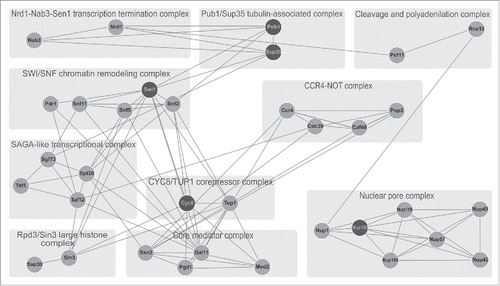Figures & data
FIGURE 1. RNA-modulating prions and amyloids, and cellular processes in which they are implicated. Shown are cellular processes or protein complexes, which are associated with corresponding prions and amyloids. Arrows connect consequent stages of the mRNA life cycle.

TABLE 1. RNA-modulating prions, amyloids, and amyloidogenic proteins
TABLE 2. Functional categoriesFootnote* overrepresented in the subset of Q/N-rich proteinsFootnote** in comparison with the entire proteome of S. cerevisiae
FIGURE 2. Q/N-rich subunits of protein complexes in S. cerevisiae and their interactions. Shown is the interactome of Q/N-rich subunits of protein complexes containing more than one Q/N-rich subunit. Lines indicate physical protein-protein interactions (according to data from “String” database, http://string-db.org/). Experimentally proven prion and amyloid-forming proteins are indicated by black circles, while other Q/N-rich proteins are indicated by gray circles. Light gray rectangles indicate corresponding protein complexes (including their names, as indicated).

